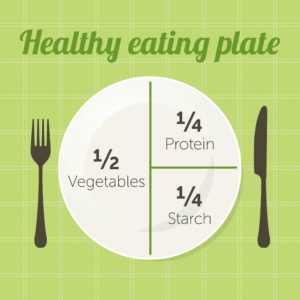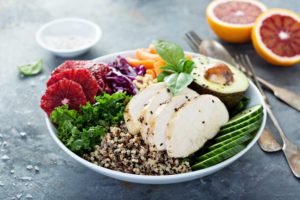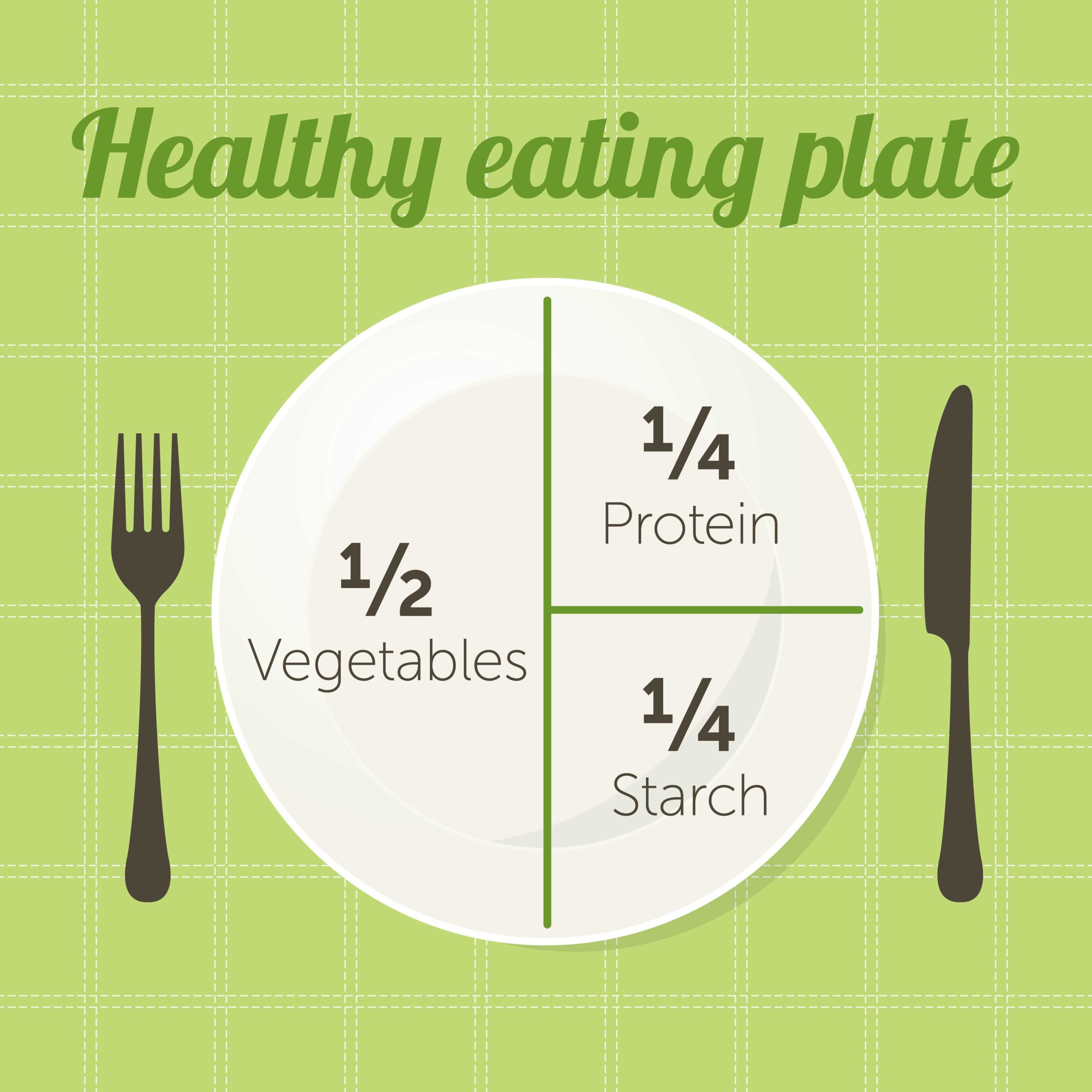Eating a Variety of Nutritious Foods
National Nutrition Month 2022
The Plate Model: How to Eat with Balance and Fun!
Healthy eating is not as binary as we sometimes believe it is! A well-rounded diet should include foods from every food group and have a variety of colors and flavors.
A simple strategy to make sure we’re “covering the bases” with food groups is the plate model.
Half of your plate should come from non-starchy vegetables. This includes a wide variety of veggies, like tomatoes, cucumbers, spinach, lettuce, onions, peppers, and even things like salsa! Add as much (or as little) variety as you like! The more colors, the better.
One fourth of your plate should come from a starchy carb option. Starchy carbohydrates include grains, fruits, and starchy veggies like potatoes or squashes. Sometimes we have a tendency to overeat the starchy foods, especially when it comes to things like pasta. Rather than cutting out starches entirely, cut back on quantity. Switching to whole grain options (like quinoa, brown rice, whole grain pasta, etc.) will also help you control hunger and aid in digestion!
The final fourth of the plate should come from a protein source. Protein can be from an animal source, like poultry, meat, fish, or eggs, or from a plant source, like beans or nuts. Try to chose leaner meats more often, as well as avoid using too much salt or condiments.
Don’t forget fats! We can cook with oils, add nuts and seeds to dishes, as well as small amounts of things like butter, mayo, or dressings. Fats are incredibly important for satiety, so make sure to include some. Just don’t ‘swim in it’!
Regardless of the time of day, the plate model can help us balance our food groups and feel satisfied.
Here are some examples of a well-balanced meal or snack:
- Sliced cheese (protein) crackers (whole grain) and tabouli (veggies)
- Apple (fruit / starchy) and peanut butter or other nut butter (fat and protein)
- Cucumber and carrot sticks (veggies) with guacamole (fat)
- Mixed green salad (veggies) with grilled chicken (protein) and Italian dressing (fat)
- Whole grain toast (whole grain) with almond butter (protein and fat) and sliced strawberries (starch)
- Smoothie with pineapple (starch), coconut milk (starch, fat, protein), protein powder (protein)
 Remember, healthy eating doesn’t have to be boring! Get creative with flavors and combinations. If you would like to learn more about healthy eating, or have questions about nutrition and health, ask your provider for a referral to our nutrition department.
Remember, healthy eating doesn’t have to be boring! Get creative with flavors and combinations. If you would like to learn more about healthy eating, or have questions about nutrition and health, ask your provider for a referral to our nutrition department.
Registered Dietitian
DMC Primary Care
CLICK HERE to learn more about Emily Calder, MS, RDN, LDN.
CLICK HERE to read about Nutrition Services at DMC

